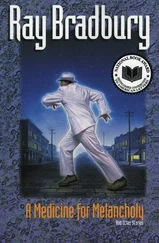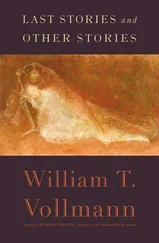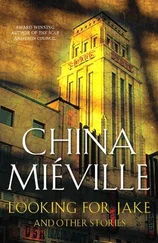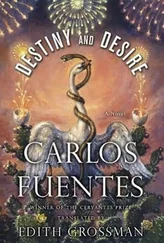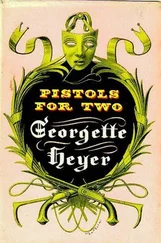It’s true, you would have liked to say to the nuns, but I shall forget everything the minute I step out the door, except these four things: that nuns are only women who are rarely seen; that since they drink shadows they are always fresh; that flowers are like nails in the coffins of the dead; and that in December, perhaps, a child of yours will be born here. Only about this last do you have any doubts, just as the woman and the boy seemed to waver between two possibilities. Will a new child be born in December to prevent the other child you conceived from dying in April, the one who grows old or fades away before your eyes? But if the child you know is going to grow old and die much later and the new child is going to die in his place at the beginning of spring, will it be necessary to create a new sacrificial child each year who will assume, indefinitely, the death of the glowing child? Who will be the annual father of the sacrificial child? This year it was you, though they were expecting your brother, the carpenter José María. Does it matter who fertilizes the mother, how many pricks have entered and will enter the blessed and fertile belly of the dark woman? Or, perhaps, the boy you know will die, forsaken, in April, and each year a new child will be substituted, to be born in December and, growing rapidly, to die in April. In either case, the mother will be impregnated every year. This was your year … But of the dog you have no doubts; he guided you here and now he is showing you the way back. You realize that you had only noticed his injured rump, not his yellow body, streaked and stinking, not the melancholy eyes that perhaps give gold its value.
15
When I was young I made a trip to Scotland, my grandparents’ country, Santiago Ferguson told his daughter, Catarina. For me, that visit was both an inspiration and a reproach. In Glasgow, I encountered the past.
— Is that where you want to die?
— No.
— Then do you know where you want to die?
— Yes, in Wells Cathedral, he told her, he told us, far from anything that reminds me of all the things I don’t wish to remember, in the place that least resembles what we have created here. In a church without Virgins.
After his burial she told us a story: the day he visited the Mackintosh house in Glasgow, Santiago Ferguson left his companions and lost himself in the labyrinth of those three buildings that fit one inside the other, like stacked Chinese boxes: a modern municipal building made of concrete, a prison posing as an art museum, and, at the heart of the architecture, the reconstruction ( sorrowful, secret, shameful, Catarina) of the home of the Mackintosh family.
But as he became more and more lost in astonishment (labyrinth: maze, amazement, repeated Ferguson, possessed by that astonishment), two things happened simultaneously.
First of all, he felt the various styles of architecture, infinite and wonderful, shifting before him: Palladian theaters, prisons designed by Piranesi, Jeffersonian lookouts above the clouds of Virginia, Art Nouveau palaces in the Chihuahua desert, all telling him (as he, always teaching, tells her, tells Catarina) that the word “labyrinth” also denotes a poem that can be read backwards and forwards and makes sense either way.
At the same time, he felt that he was losing control of his movements.
The first sensation filled him with the special ecstasy associated with one of his most singular notions, that of an ideal communication between all human constructions. In the bold, the adventurous mind of Santiago Ferguson (our teacher, our father, her husband, your lover), architecture was the simple and complex approximation to an imagined and unattainable model. Through these ideas, Ferguson flirted with the simultaneously tempting and horrifying notion of a perfect symmetry that would be as much the origin as the fate of the universe.
Then we remembered that in class, as we tried to comprehend the mysterious web our teacher had woven around our lives without our realizing it, Santiago Ferguson vigorously rejected the concept of unity. He called it the “ultimate Romantic nostalgia.” But he considered equally detestable the notion of fragmentation, which he said was the devil’s own work.
— The blithe Romantic identification of subject and object not only repulses me (it was as though we were still in his class, hanging on his every word); it terrifies me.
He made a sweeping gesture in the air. His blackboard remained empty. — It is a totalitarian idea, impossible physically, but enslaving mentally and politically, because it sanctions the excesses of those who would first impose it and then maintain it as the supreme, unassailable virtue.
Then he startled us, pounding his hands together twice, saying first — to see if we’d been dozing — that unity — now listen! — is no virtue, and, second, he scraped his chalk across the board to make our nerves stand on end, so we would be sure to hear:
— I fear happiness at any price. I fear imposed unity, but I have no desire for fragmentation either. Therefore, I am an architect. Ab ovum.
He turned to scrutinize us, with something approaching tenderness.
— Simply, a building allows me to regain the difference between things, aiming for symmetry as the concept that contains identical measures of identity and difference.
These arguments, communicated by the professor with his usual fervor, were the essence of his thought, the ideology behind his always imperfect and incomplete work. He explained them, we said, with words and gestures that were warm and fluid — but more than once we surprised him peeing in the faculty bathroom, merrily spraying the white porcelain and repeating “I want symmetry, I want symmetry!” And still his elegance and energy seemed undiminished.
But in the Mackintosh house, at the same time that his faith in the significance of his profession was renewed, he also felt, in that labyrinth, that he was losing his motor control. He told Catarina it wasn’t that he felt paralyzed or that his limbs felt heavy. On the contrary, his movements were as quick and precise and fluid as ever. But they were not his.
Then Santiago stopped — Catarina continued the story — and he realized that there was someone mimicking every one of his gestures. Terrified, he wanted to seize him, but he couldn’t because the being that was imitating him was invisible; and yet Santiago could distinguish him perfectly well: he was a man with a thick mustache, wearing mourning clothes, a black silk tie, and a serious expression. I couldn’t see him, said Ferguson (to Catarina), because, since he mimicked me so exactly, that strange alien being was me — he was within me so he was me, transported, in a sort of vision, outside of myself, so that I couldn’t see him.
He felt that being within him and at the same time beside him, simultaneously preceding him and following him, so that it was impossible to determine whether that perfect similitude of expression and motion was an imitation of Santiago Ferguson by that repulsive, mournful being (he began to smell decay around him — putrid water, damp skin, old flowers) or if he, Santiago Ferguson, were imitating his invisible companion.
He told Catarina, “I wasn’t master of my movements. When I stopped abruptly in a corner of the Mackintosh house — a house that had three times been walled, displaced, disguised — and a shaft of icy light suddenly blinded me, I couldn’t tell, daughter, if I was the one who had stopped or if that being who imitated me so perfectly had stopped me. Then a totally alien voice came from my lips, saying, Take care of us. From this time on, dedicate yourself entirely to us.
“I don’t understand why, by what right, or on what whim, he dared impose that responsibility on me. I was blinded by the light but as my eyes adjusted to it, I could begin to make out a partly open door in one corner. Then the figure who had accompanied me pulled himself away from me and entered the space that could be glimpsed through the open door.
Читать дальше

